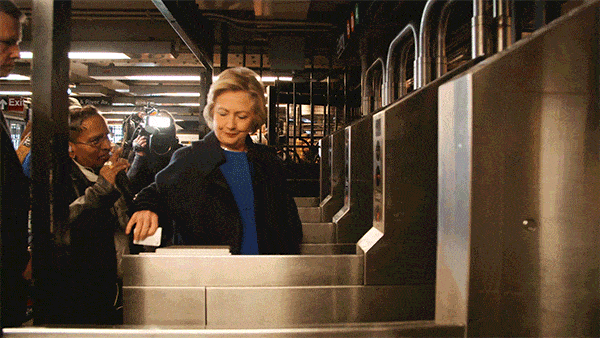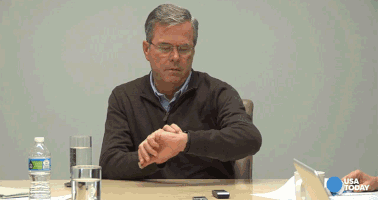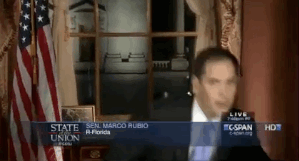Every form of transportation has some unique considerations. Car drivers worry a great deal about parking near their destination–a consideration bus riders don’t need to think about. But, as transit consultant Jarrett Walker has written about, some considerations are universal. As Uber and Lyft have added carpool services, some people have noted that they can learn from traditional transit:
A bus. This man is describing a bus. http://t.co/Mfbx4Y9TeL pic.twitter.com/H7yYSVLQ43
— Jack Smith IV (@JackSmithIV) August 24, 2015
But what lessons go in the opposite direction? What can transit learn from Uber?
Lesson 1: payment convenience matters
 When you get in an Uber, you don’t pay fare like you do on a bus. You just start moving. When you reach your destination, you don’t fumble for cash and wait for change like you do in a taxi. You just get out. This may seem like a small detail, but Uber riders frequently cite this convenience as giving the service a magical feeling. For the driver, the less time she spends accepting payment, the more time she can spend getting people around.
When you get in an Uber, you don’t pay fare like you do on a bus. You just start moving. When you reach your destination, you don’t fumble for cash and wait for change like you do in a taxi. You just get out. This may seem like a small detail, but Uber riders frequently cite this convenience as giving the service a magical feeling. For the driver, the less time she spends accepting payment, the more time she can spend getting people around.
Buses too can use off-board payment systems to relieve passengers of the headache of fumbling for their fare and waiting on 50 other passengers to each find and pay exact change. Typically, passengers get a proof of payment and fare inspectors will check a fraction of rides, much like meter inspectors check a fraction of parking meters.
Lesson 2: There’s no such thing as enough cutting wait times
 With much fanfare, Austin introduced bus services that come every 15 minutes at peak times and every 20 minutes off-peak. For Uber, by contrast, a passenger waiting 15 minutes for service is considered a failure. Downtown pickup frequency was often under 3 minutes and even then, Uber still worked hard to cut wait times down. The company endures a huge amount of negative media and customer sentiment for “surge pricing,” all to make sure that whenever and wherever a passenger requests a car, one will show up in a couple minutes.
With much fanfare, Austin introduced bus services that come every 15 minutes at peak times and every 20 minutes off-peak. For Uber, by contrast, a passenger waiting 15 minutes for service is considered a failure. Downtown pickup frequency was often under 3 minutes and even then, Uber still worked hard to cut wait times down. The company endures a huge amount of negative media and customer sentiment for “surge pricing,” all to make sure that whenever and wherever a passenger requests a car, one will show up in a couple minutes.
At $1.25 to $2.50 per ride and limited other funding, it’s difficult for transit to match 5-10 minute frequencies across their large service area. But transit operators and the cities in which they operate need to bring the same relentless focus on frequency that Uber brings. Some important ideas for adding frequency include off-board payment, “level boarding” buses people can walk onto without climbing stairs, multiple-door boarding, and dedicated bus lanes so that buses aren’t caught up in traffic.
Lesson 3: Relentlesly improve Driver Customer service
Transit agencies and taxi companies have become increasingly responsive to social media complaints. One Austin taxi driver was recently fired after a customer took a video of terrible (and illegal) service and it found its way to a company bigwig’s Facebook account.
Uber  doesn’t leave this customer service to chance. Every single ride comes with an easy form for customers to rate their experience. Drivers who maintain high ratings are rewarded and drivers with low ratings are given remedial training. If they don’t improve, they are let go. Most drivers go above and beyond expectations–offering gum or bottled water or mood music. Transit agencies could incorporate a method for customers who pay by app to rate their rides and use information to grade and improve drivers. This would require a massive–but necessary–change in how agencies relate to their drivers and customers.
doesn’t leave this customer service to chance. Every single ride comes with an easy form for customers to rate their experience. Drivers who maintain high ratings are rewarded and drivers with low ratings are given remedial training. If they don’t improve, they are let go. Most drivers go above and beyond expectations–offering gum or bottled water or mood music. Transit agencies could incorporate a method for customers who pay by app to rate their rides and use information to grade and improve drivers. This would require a massive–but necessary–change in how agencies relate to their drivers and customers.

One thought on “3 lessons for buses, from Uber, illustrated by presidential candidates”
Comments are closed.